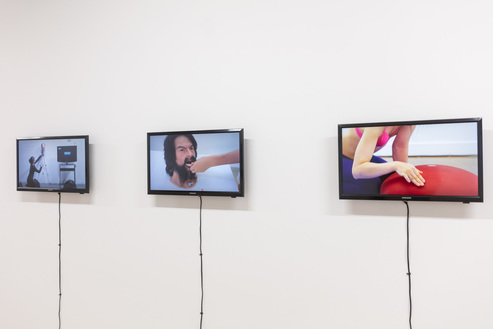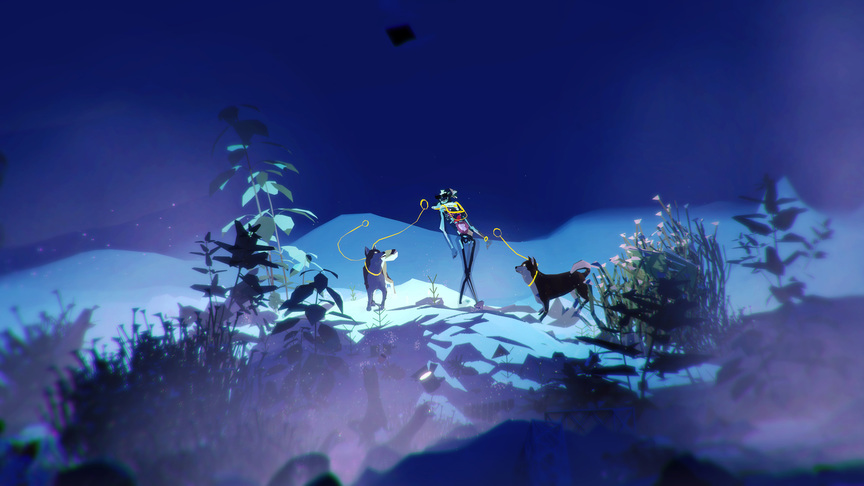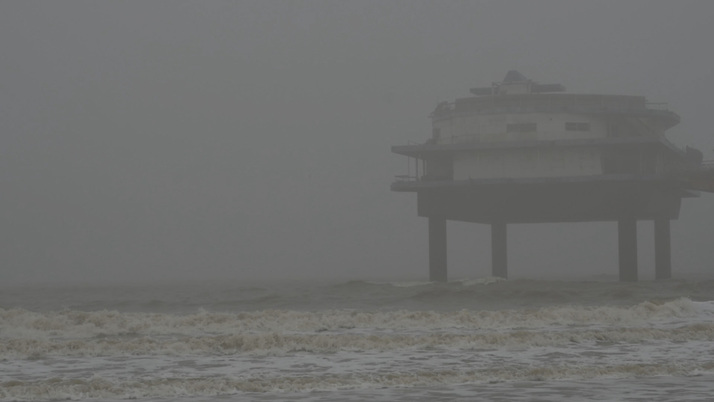
R
E
V N
E
X
T
If you clicked on this article looking for an answer to what “posthuman” means, we have good news: you are not alone in your confusion. Presuming you identify as human, no one else of your kind really has a firm grasp of the concept. If we break the word down into its constituent parts, we can derive a basic signification of the term: “after human.” Posthuman thought is, then, a perspective that is future-oriented and speculative. Catalyzed by the countless existential threats to humanity, such as ecological collapse and natural disasters, pandemics, and global warfare, to name a few, manifold visions of posthuman worlds have sprung up across the fields of philosophy, fiction, film, and contemporary art, leading to wide-ranging discussions. In simple terms, however, what undergirds these explorations is the attempt to unravel and shift centuries of human-centric perspectives on time, space, and human nature itself.
To help illustrate the ways in which the posthuman has been conceived in art and culture, here are some loosely categorized projects, writings, and television series.
THE OTOLITH GROUP, From Left to Night, 2015, still from five-channel video and mirror installation, duration variable. Copyright and courtesy the artists.
Aliens and Humanoid “Others”
Long depicted in comics, films, and television shows, aliens are one way in which humans imagine non-humans. And while there are no cone-headed extraterrestrials in the works of The Otolith Group (Anjalika Sagar and Kodwo Eshun), aliens have fundamentally shaped the artists’ thinking. In 2019, the collective had a show at the Van Abbemuseum in Eindhoven, the Netherlands, called “Xenogenesis” (“Xeno-“ meaning other, “-genesis” meaning to produce), based on the trilogy of the same name by science fiction writer Octavia Butler, in which aliens interbreed with humans. The Otolith Group takes Butler’s portrayal of xenogenesis as a departure point to probe how humans can become something “other.” At the exhibition, their five-channel video installation From Left to Night (2015), of abstract patterns evoking the swirling liquid crystals of LCD screens, was intended to be so mesmerizing that viewers would be totally absorbed, feeling and thinking as one with the screen, and, in the process, let the boundaries that enclose their subjectivities (or sense of “I”) dissolve.
Another example of how artists have sought to expand human formulations of self can be found in the performances of Geumhyung Jeong. Working with humanoid figures assembled from household mechanical objects, prosthetic limbs, and mannequins, Jeong stages scenes involving the machines dancing or cutting open her dress, for instance. In these acts, Jeong blurs who is in control and who is being controlled. In her solo show “Homemade RC Toy” at Kunsthalle Basel in 2019, the robots functioned simultaneously as remote controls and remote-controlled objects, further obfuscating who has agency. In this relatively low-tech fashion, Jeong collapses the hierarchical divide between human and object. Her projects are undoubtedly indebted to Donna Haraway’s seminal 1985 essay A Cyborg Manifesto, which chips away at the binary categorizations, such as nature and culture, self and other, animate and inanimate, that pervade contemporary human thought.
Artificial Intelligence (AI)
Jeong’s animatronics lead us to the second major strand in posthuman imaginations: AI. Here, we can turn to Ian Cheng’s trilogy of live, computer-generated videos Emissaries (2015–17), which run according to multiple AI models, each reacting to the conditions of the simulated environment. The exception is the “emissary” character who is coded to proactively try and realize a set of fixed narrative goals within the shifting virtual world. Together, these AI agents determine the videos’ storylines. Cheng envisioned the project as a “video game that plays itself,” like a sentient being with agency beyond that of its human creator.
The third episode of Cheng’s series, Emissary Sunsets the Self (2017), is predicated on AI’s complete takeover of the world—a posthuman scenario with resonances in the popular HBO television series Westworld. In the show, androids override the scripts that they were coded to perform in an amusement park, and begin to question their own will. The company that produces these androids also explores the application of AI for human immortality. This very idea is played out in “San Junipero,” an episode from another television series, Black Mirror, in which the protagonists’ consciousness are uploaded to a virtual realm, where they continue to exist even after the death of their physical bodies. These posthuman visualizations call into question what the essential, defining human qualities are—if any—and what constitutes consciousness.
The Anthropocene
Humankind itself is ushering in the posthuman era by destroying the natural resources that our species depends on for survival. In “Isle,” Ali Mahmut Demirel’s 2018 solo exhibition at Istanbul’s Arter, the artist posited that the natural world will survive even though Homo sapiens will not. The show featured videos based on a post-apocalyptic world with no human survivors, questioning: “How do structures live without humans they’re designed for and by?” The Pier (2015), for instance, focuses on the critters and algae that have invaded the abandoned Scheveningen Pier in the Netherlands, as well as the waves that continue to lap at the structure’s foundations.
Related: Transhuman
A concept that is related but that should be differentiated from the posthuman is the transhuman. The latter is based on how human physiology can be transformed with the help of technology. This is best exemplified by the animations of Lu Yang, who engages with the impacts of neurotechnologies, such as transcranial magnetic stimulation, on human consciousness.
What “posthuman” means ultimately remains an open question. While attempting to imagine what forms it might take is ultimately a human endeavor—and there is an irony to this—shining a light on humanity’s blind spots is a worthy pursuit because Homo sapiens’ complacency with its current mode of existence has become a serious predicament.
To read more of ArtAsiaPacific’s articles, visit our Digital Library.

















